Golden Retriever Vs Bernedoodle – What Is The Best Breed For You

These two breeds have very different origins. The Goldie was bred in Scotland to assist hunters, the Bernie was designed in Canada with the sole purpose of creating the perfect family pet and companion.
Though Golden Retrievers have been around for a long time and remained extremely popular throughout that time, the Bernedoodle, a result of crossbreeding Bernese Mountain Dogs and Poodles, has been gaining in popularity since its introduction and has proven to be an excellent choice for many families.
Key Similarities
Bernedoodles and Golden Retrievers are of similar size, and their coats also resemble each other, despite being different colours.
Both these breeds are also renowned for how affectionate and playful they are, this, along with the fact that they are also both very intelligent and trainable, goes a long way towards explaining their popularity as pets.
Key Differences
The most obvious difference between these two dogs is an aesthetic one. The Golden Retrievers have coats in recognizable shades of gold from where they get their names, while Bernedoodles usually have coats that are black, white, brown or a mixture of those colours.
Another major difference is that Bernedoodles share Poodle genes, meaning that they tend not to shed, whereas the purebred Golden Retriever is known to be a shedder.
Though both dogs are active and require exercise, Golden Retrievers are known for needing a lot of exercise.
Pros over each other
As always, which dog is best for you will largely depend on your preference on certain aspects, as one breed isn’t necessarily better than the other, they are simply different.
That said, we can look at some of the characteristics each is known for to determine which would be a better choice for you.
Golden Retrievers tend to be more confident and adaptable, making them excellent family pets and companions as well as great working and service animals. This also means that they can adapt to any living situation.
Bernedoodles are bred intentionally to have a low tendency to shed, whereas Goldies shed quite a bit. Bernedoodles do need exercise and they are very energetic and playful, but they don’t require quite such intense exercise as Goldies do.
Who Should Consider Owning Each One?
Bernedoodles are very much designed to be a family pet. They will provide endless joy to a family who can give them the love and attention they need. If you have at least a small yard for them to play in and a house where there is always someone home (they don’t like being alone a lot) you will love a Bernedoodle.
If you want a loving, playful dog who is also independent and self-assured, you will find, like so many people around the world, that the Golden Retriever is an excellent option. They adapt well to any living arrangement and are able to spend large parts of the day indoors as long as they get some intense exercise. If you are willing to deal with the shedding and can give them enough exercise to keep them happy and healthy you will see why Golden Retrievers are among the most popular dog breeds in the world.

All About the Golden Retriever

The Golden Retriever came from Scotland and originated in the 1800s. The breed was designed for hunting ducks and waterfowl.
Golden Retrievers are excellent hunting dogs but are wonderful family dogs as well.
All About the Bernedoodle
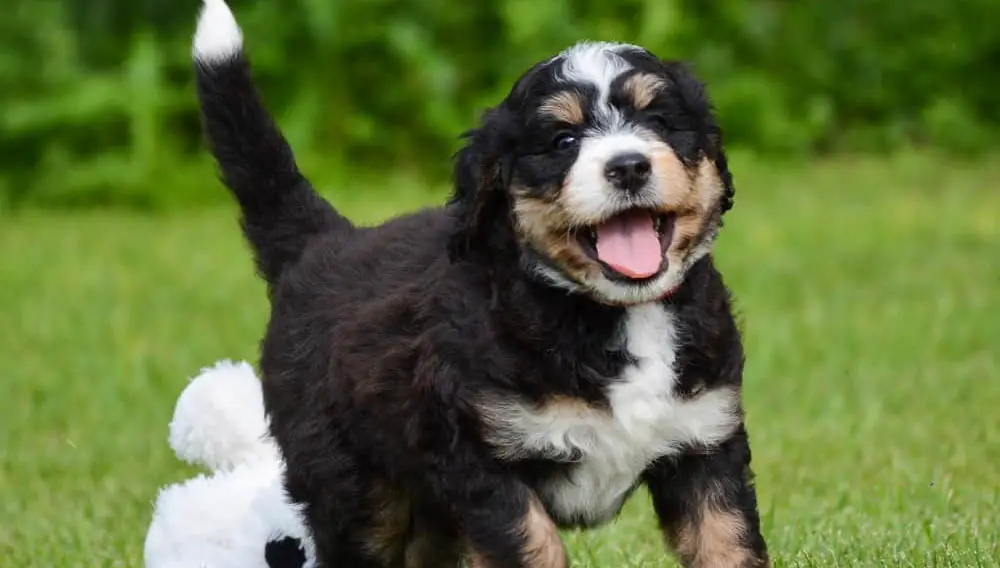
The Bernedoodle originated in Canada and is a cross between a Bernese Mountain Dog and a Standard Poodle.
History:
The Spaniel breeds came from Spain and were all sizes and shaped. The types of spaniels were land, water, springer, field spaniels, and Sussex.
All of these spaniels were bred for different hunting duties. The dog’s size was the main point of difference between all these dogs.
The Cocker Spaniel was used to retrieve and flush out small game such as woodcock, pheasant, and quail. In 1946, both the American Cocker Spaniel and the English Cocker Spaniel were recognized officially by the AKC as separate breeds.
Size and appearance:
Cocker Spaniels have incredibly expressive faces and stand out in a crowd. However, their tail keeps wagging, their eyes are dark, and big floppy ears.
Your Cocker Spaniel’s weight will be between 24-28 pounds, with the male being 15 inches at the withers and the female being 14 inches. The head is graceful and round with a broad square muzzle. The ears are feathered long, and the dog’s back slopes towards the tail. There is feathering on the ears and the legs, underside, and chest. Most of the time, the tail is docked.
There are a variety of colors with Cocker Spaniels. The colors can be solid black, tan, or red. Other coats are bi-colored and tri-colored. The coats can be black and white, black and tan, or black and white with tan flecks.
The AKC has the Cocker Spaniel divided into three varieties for show. The divisions are parti-color, black, or ASCOB, which stands for Any Solid Color Other Than Black.
Lifespan:
The life expectancy of your Cocker Spaniel is between 14 to 16 years.
Guard dog or family pet?
The guarding instinct is very low in this breed.
You can train them to bark when someone is at the door, but that’s about it. These dogs are friendly, gentle dogs who make great family pets.
History:
The Bernedoodle is a 50/50 mix of Purebred Poodle and a purebred Bernese Mountain dog.
The breed has existed for a while, but the first official cross breed came from SwissRidge Kennels by Sherry Rupke.
The first official Bernedoodle was achieved in 2003, and she has an entire breeding program now for this hybrid.
This breed is not one officially recognized by the AKC, so there isn’t a set in stone breed standard.
However, there are three sizes of Bernedoodles, and there are at least three generations.
Size And Appearance:
Bernese Mountain Dogs are large dogs. A Standard Bernedoodle can weigh between 55 to 90 pounds and are between 23 to 29 inches tall.
A miniature Bernedoodle can weigh between 25 to 49 pounds and is between 18 to 24 inches tall.
There are also toy-sized Bernedoodles which are 75% miniature Poodle and only 25% Bernese Mountain dog. These small Bernedoodles weigh about 10-24 pounds are about 12 to 17 inches tall.
A Bernedoodles coat can be tri-colored of black, brown, and white, or mostly black. The coat on this breed is either curly or wavy. These dogs have long ears, a triangle-shaped muzzle, and button eyes. The tail is usually long and bushy.
Lifespan:
The Bernedoodles lifespan is around 12 to 15 years, with the miniature version having a longer lifespan of up to 18 years.
Guard Dog Or Family Pet:
If you want a guard dog, the Bernedoodle isn’t going to be it. This breed is much too friendly to be a guard dog.
But as a family pet, this dog is an excellent choice. Bernedoodles love to be around children and will be vigilant around them.
In fact, your Bernedoodle is pet-friendly and will bond with just about any other pet you have. Just remember to socialize your pet from an early age, and he’ll get along well.
Golden Retrievers In More Detail
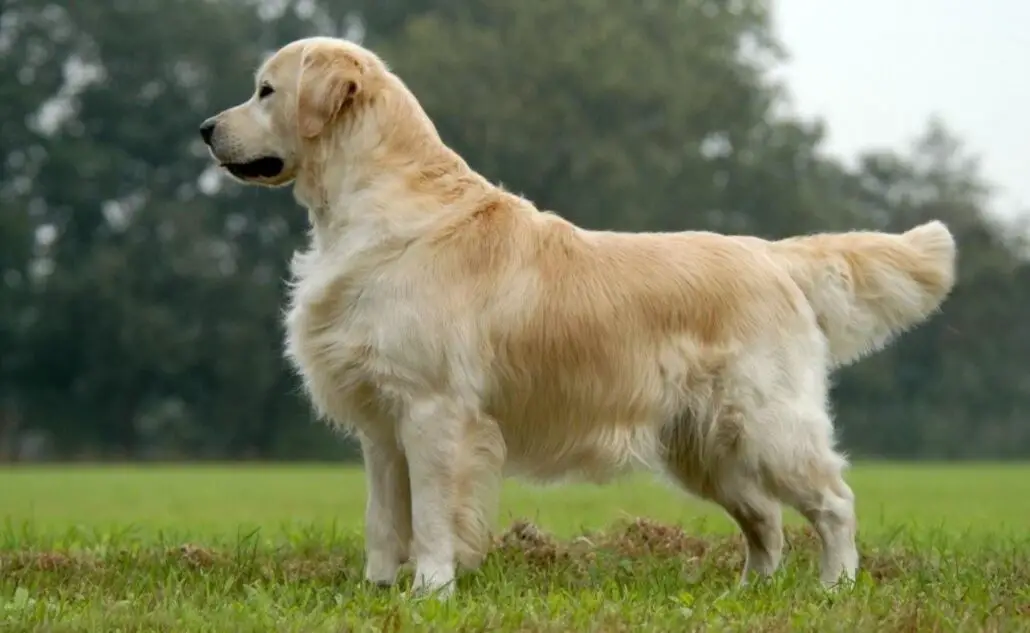
Temperament And Behavior:
Golden Retrievers are naturally well-behaved and friendly. Their temperament is playful, gentle, and outgoing. Plus, this breed is intelligent and devoted to its family.
A Golden Retriever gets along with other animals. However, these dogs do exuberant jumps on people when young. Plus, this breed does tend to mouthiness and likes to carry things around.
Training and obedience:
A Golden Retriever has a puppy frame of mind until he is over three years old. Early training is essential so you can instill good manners and calmness.
Even if he is eager to please, your dog will be distracted by the wonderful new sights and smells, so patience is a must.
Exercise Needs:
These dogs are from the sporting class, so they need exercise. If your dog can’t vent his energy and you find him interesting things to do, then he’ll find them. This breed has an extremely high energy level and a high exercise level.
An hour of exercise at least will help keep your dog’s exuberance under control. After that, your dog will love to retrieve stuff and bring back just about anything thrown to him.
Shedding, grooming, and maintenance:
Golden retrievers shed a lot and often. They require regular brushing to keep ahead of the hair shedding.
Because the breed is a hunting and waterfowl dog, the outer coat is dense and will repel water.
You will regularly need to brush and comb your dog to avoid his coat getting matted and tangled. Some dogs of this breed have a medium-length coat that isn’t as hard to groom. Other dogs have a heavier coat with lots of feathering.
Plus, Goldens need to be clipped and scissored occasionally, so a trip to the groomers may be necessary to keep your dog sanitary. Keeping nails trimmed is also a part of the grooming. These dogs shed moderately in the winter and summer but heavily in the spring and fall.
Because this breed has fold-over ears, they are prone to ear infections. The ears create an environment for bacteria and fungus to grow. It appears as black dirt-looking particles with a terrible odor. Simply gently wipe the outer ear with a cotton ball that’s been dampened with pH-balanced ear cleaner.
Health issues:
Golden Retrievers are prone to cancer, heart problems, skin allergies, eye defects. Plus, they gain weight easily, so overfeeding should not be done. In addition, they are susceptible to bloat, hypothyroidism, and hip dysplasia.
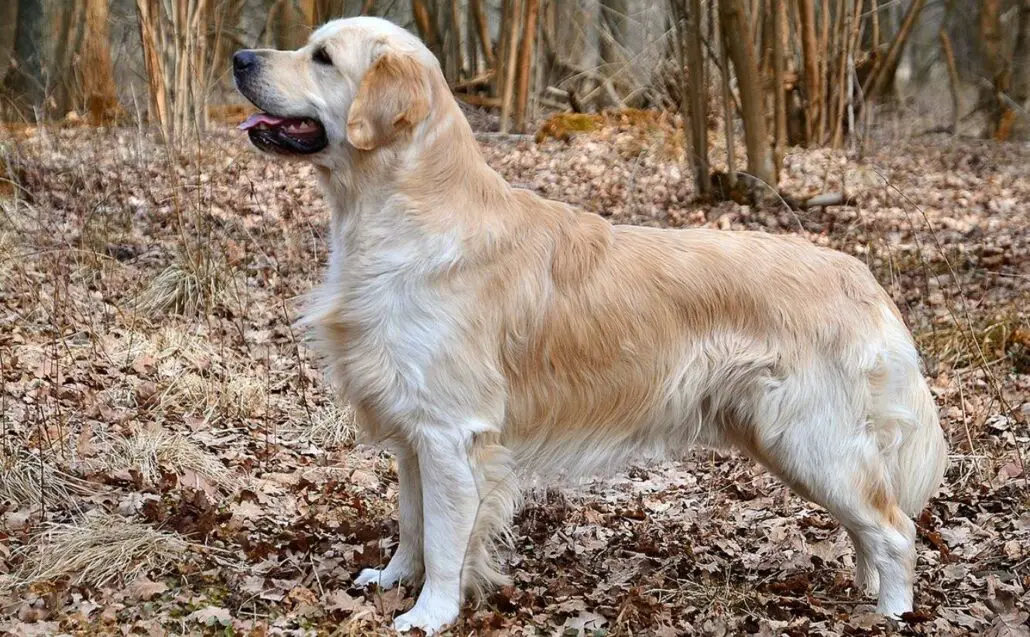
Quick Facts:
These dogs have a distinctive doggy odor and produce a lot of dander.
The breed is a good match for children, other dogs, cats, families, and seniors. They are excellent dogs for first-time pet owners, and these dogs love water.
The cost of a Golden Retriever is about $500.
Bernedoodles In More Detail
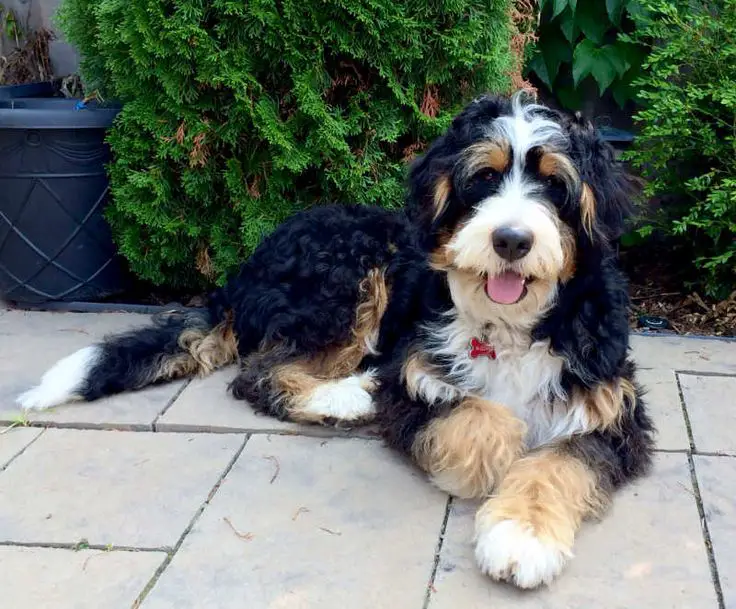
Temperament And Behavior:
Bernedoodles can have the best characteristics from their parents if the breeder is conscientious.
Your Bernedoodle can be sociable, friendly, playful, intelligent, and happy. But sometimes, the breeding doesn’t go as planned.
You can end up with the hyperness of a poodle or the stubbornness of the Bernese in your pup.
Training And Obedience:
Socialization and training are essential for this breed. Enrichment activities are recommended so your dog doesn’t get bored and starts with excessive barking or destructive chewing.
Exercise needs:
Your Bernedoodle is not overactive but is a calm dog. Usually, this breed carries the calm and gentle nature of the Bernese Mountain Dog, not the high energy level of the poodle. But your dog will need daily walks and your attention regularly.
Shedding, grooming, and maintenance:
Your pup has a low-shedding coat with many advantages. But you will need to groom him regularly because of the curly coat. If you don’t brush him regularly, your dog will become matted or have tangled fur.
He will need to be brushed by you regularly three to four times a week. Your dog will also need to be professionally groomed every 2-3 months.
Health Issues:
There isn’t much information about Bernedoodles’ health issues because the breed is still so new. For example, the Bernese cancer rarely seems to affect the Bernedoodle.
But skin issues, elbow, and hip dysplasia, and eye issues are common. Also, hot spots tend to crop up as well as allergies. Make sure your breeder has definitely tested the parents and your puppy for eye issues and dysplasia.
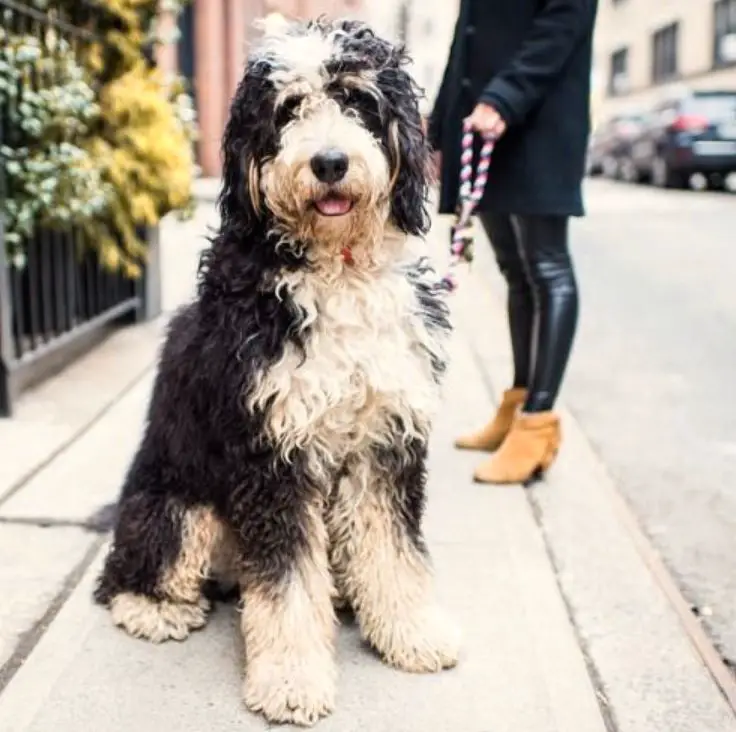
Quick Facts:
The cost of a Bernedoodle is between $2500 to $6500 because of the high demand for the breed. If the color pattern is unique, your dog will cost even more.
This high-maintenance breed can cost you between $600 to $1000 every year to keep your dog looking his best.
These dogs are the perfect dog for seniors, kids, and individuals. These dogs are friendly, social, cuddly, and loving.


